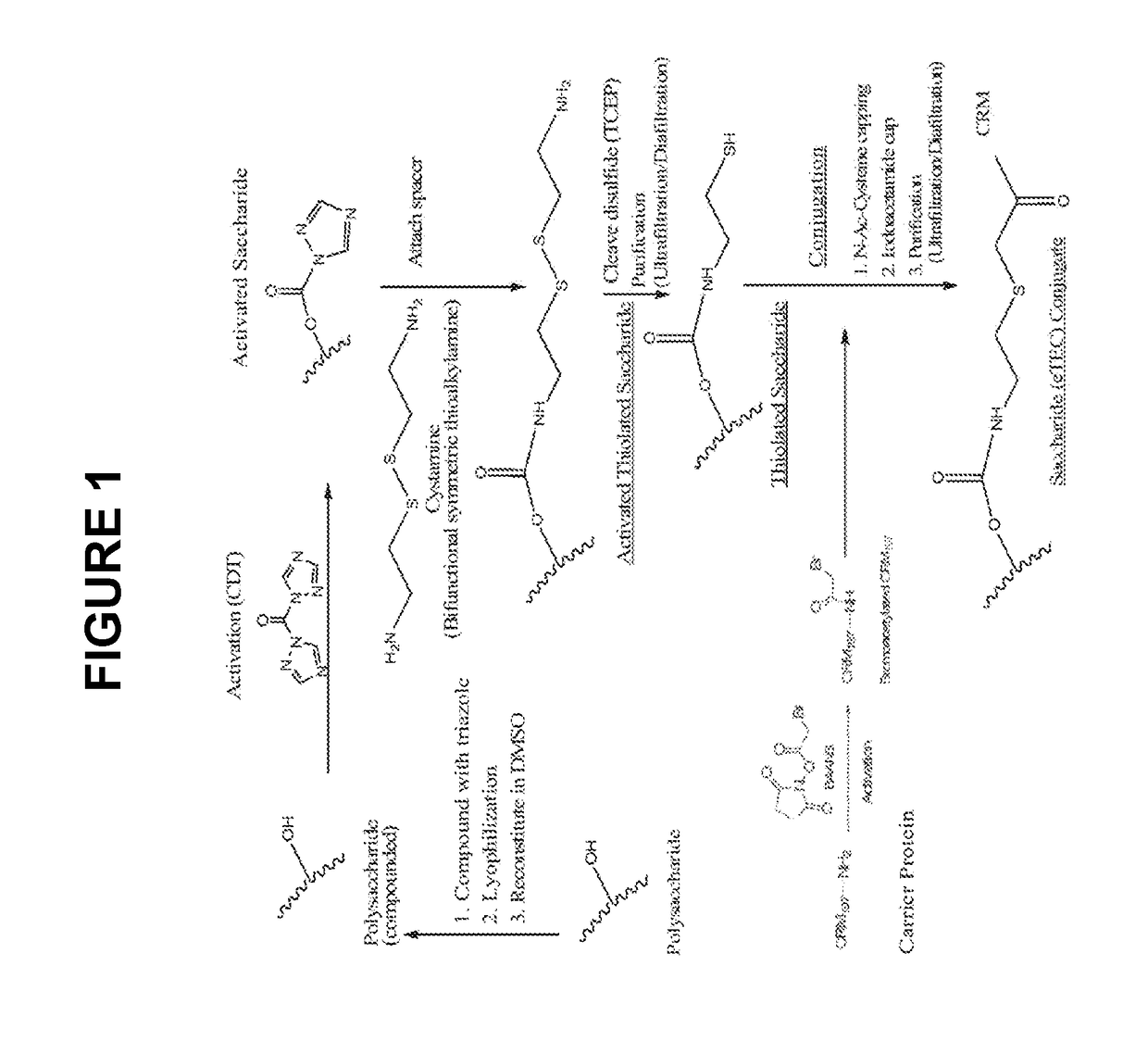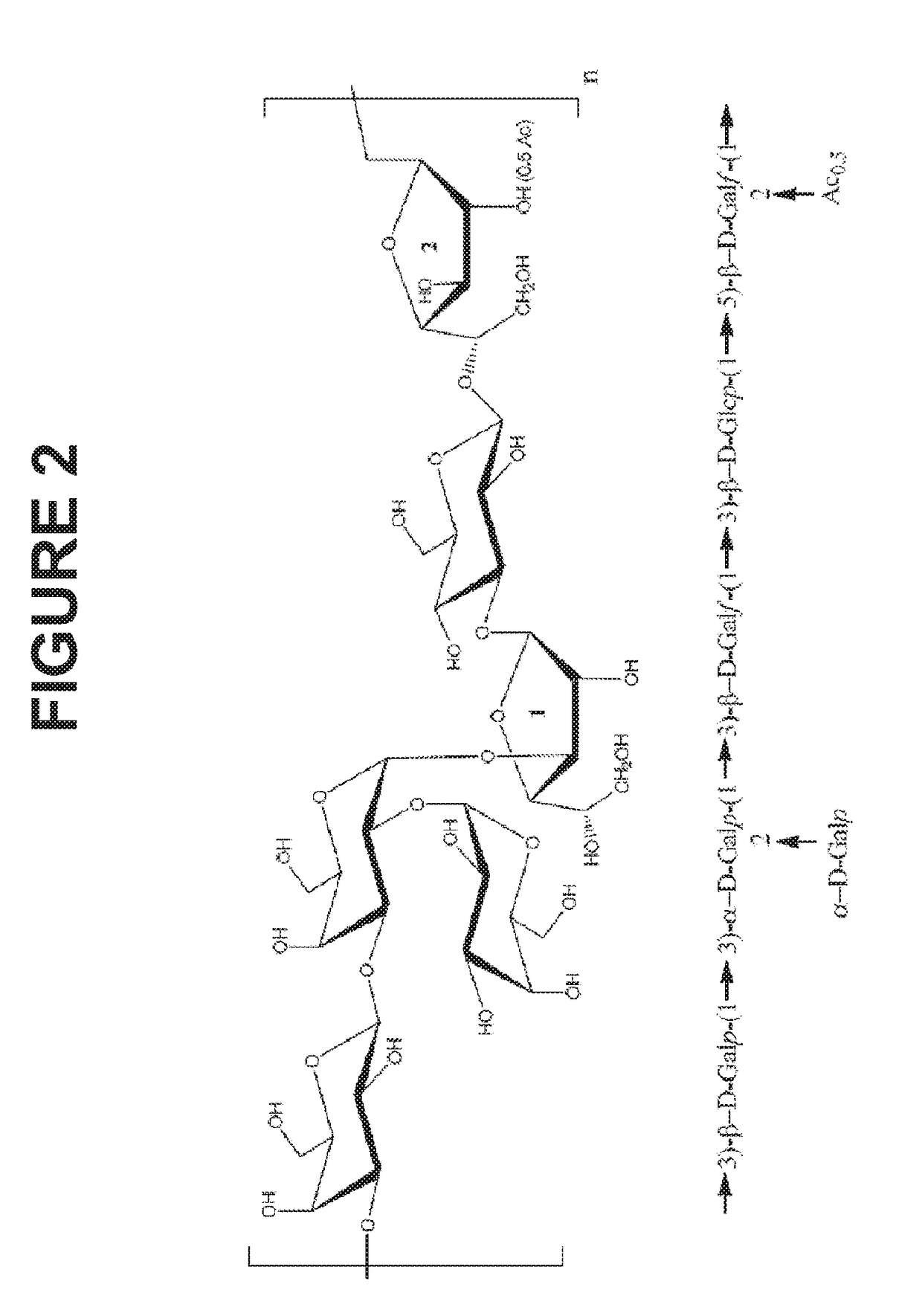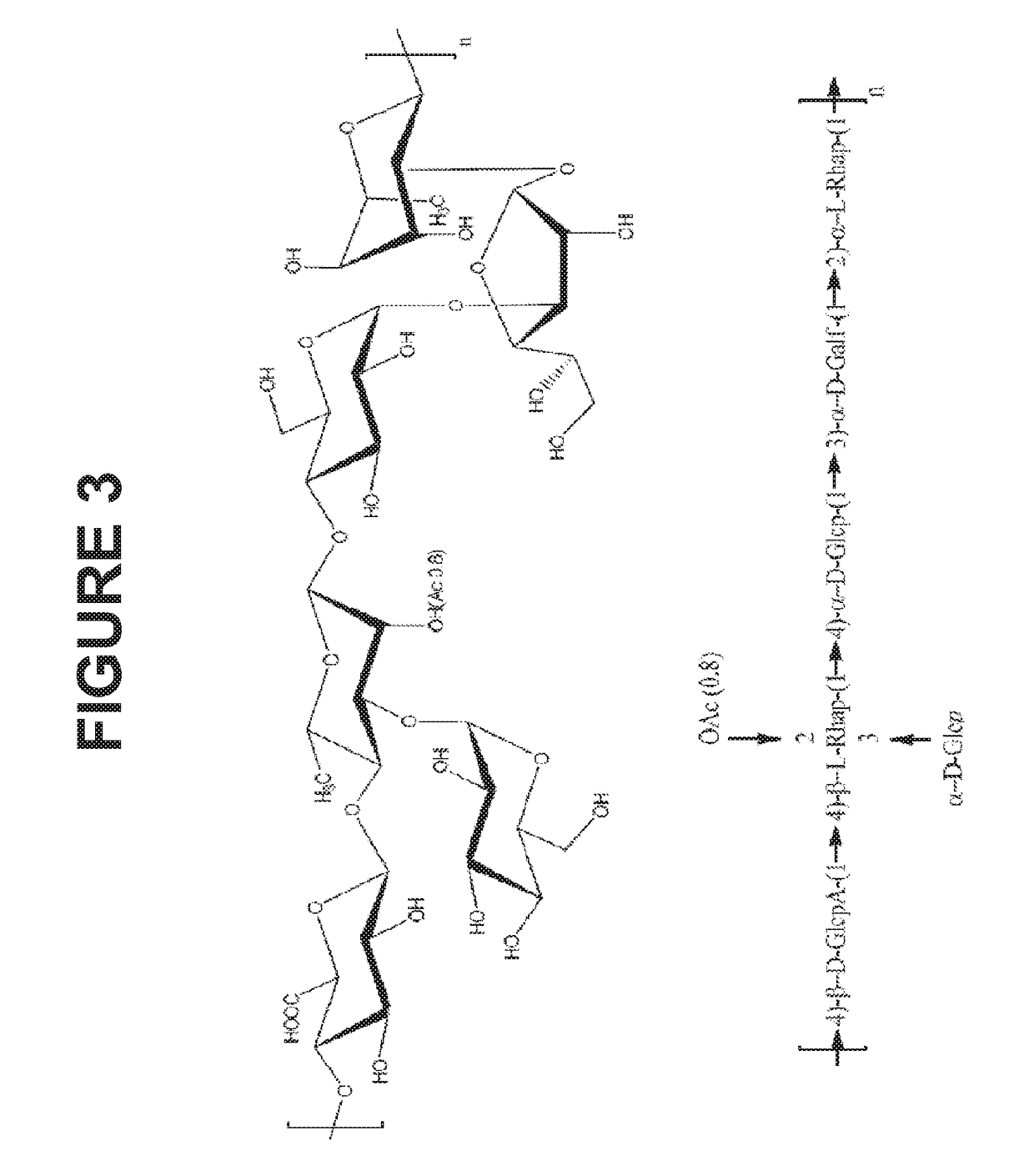Glycoconjugation processes and compositions
a technology of glycoconjugation and composition, applied in the field of glycoconjugates, can solve the problems of adverse events, adverse effects of conjugates, and potential risk of adverse events in persons or animals immunized with the preparations, and achieve the effect of reducing severity, preventing, treating or ameliorating diseases or conditions
- Summary
- Abstract
- Description
- Claims
- Application Information
AI Technical Summary
Benefits of technology
Problems solved by technology
Method used
Image
Examples
example 1
rocess for Preparation of eTEC Linked Glycoconjugates
[0216]Activation of Saccharide and Thiolation with Cystamine Dihydrochloride
[0217]The saccharide is reconstituted in anhydrous dimethylsulfoxide (DMSO). Moisture content of the solution is determined by Karl Fischer (KF) analysis and adjusted to reach a moisture content of 0.1 and 0.4%, typically 0.2%.
[0218]To initiate the activation, a solution of 1,1′-carbonyl-di-1,2,4-triazole (CDT) or 1,1′-carbonyldiimidazole (CDI) is freshly prepared at a concentration of 100 mg / mL in DMSO. The saccharide is activated with various amounts of CDT / CDI (1-10 molar equivalents) and the reaction is allowed to proceed for 1 hour at 23±2° C. The activation level may be determined by HPLC. Cystamine dihydrochloride is freshly prepared in anhydrous DMSO at a concentration of 50 mg / mL. The activated saccharide is reacted with 1 mol. eq. of cystamine dihydrochloride. Alternatively, the activated saccharide is reacted with 1 mol. eq. of cysteamine hydroc...
example 2
on of Pn-33F eTEC Conjugates
Activation Process
[0238]Activation of Pn33F Polysaccharide
[0239]Pn-33F polysaccharide was compounded with 500 mM of 1,2,4-triazole (in WFI) to obtain 10 grams of triazole per gram of polysaccharide. The mixture was shell-frozen in dry ice-ethanol bath and then lyophilized to dryness. The lyophilized 33F polysaccharide was reconstituted in anhydrous dimethylsulfoxide (DMSO). Moisture content of the lyophilized 33F / DMSO solution was determined by Karl Fischer (KF) analysis. The moisture content was adjusted by adding WFI to the 33F / DMSO solution to reach a moisture content of 0.2%.
[0240]To initiate the activation, 1,1′-carbonyl-di-1,2,4-triazole (CDT) was freshly prepared as 100 mg / mL in DMSO solution. Pn33F polysaccharide was activated with various amounts of CDT prior to the thiolation step. The CDT activation was carried out at 23±2° C. for 1 hour. The activation level was determined by HPLC (A220 / A205). Sodium tetraborate, 100 mM, pH 9.0 solution was ad...
example 3
on of Pn-22F eTEC Conjugates
Activation Process
[0258]Activation of Pn-22F Polysaccharide
[0259]Pn-22F polysaccharide was compounded with 500 mM of 1,2,4-triazole (in WFI) to obtain 10 grams of triazole per gram of polysaccharide. The mixture was shell-frozen in dry ice-ethanol bath and then lyophilized to dryness. The lyophilized 22F polysaccharide was reconstituted in anhydrous dimethylsulfoxide (DMSO). Moisture content of the lyophilized 22F / DMSO solution was determined by Karl Fischer (KF) analysis. The moisture content was adjusted by adding WFI to the Pn-22F / DMSO solution to reach a moisture content of 0.2%.
[0260]To initiate the activation, 1,1′-carbonyl-di-1,2,4-triazole (CDT) was freshly prepared as 100 mg / mL in DMSO solution. Pn-22F polysaccharide was activated with various amounts of CDT followed by thiolation with 1 mol. eq. of cystamine dihydrochloride. The CDT activation was carried out at 23±2° C. for 1 hour. The activation level was determined by HPLC (A220 / A205). Sodium...
PUM
 Login to View More
Login to View More Abstract
Description
Claims
Application Information
 Login to View More
Login to View More - R&D
- Intellectual Property
- Life Sciences
- Materials
- Tech Scout
- Unparalleled Data Quality
- Higher Quality Content
- 60% Fewer Hallucinations
Browse by: Latest US Patents, China's latest patents, Technical Efficacy Thesaurus, Application Domain, Technology Topic, Popular Technical Reports.
© 2025 PatSnap. All rights reserved.Legal|Privacy policy|Modern Slavery Act Transparency Statement|Sitemap|About US| Contact US: help@patsnap.com



